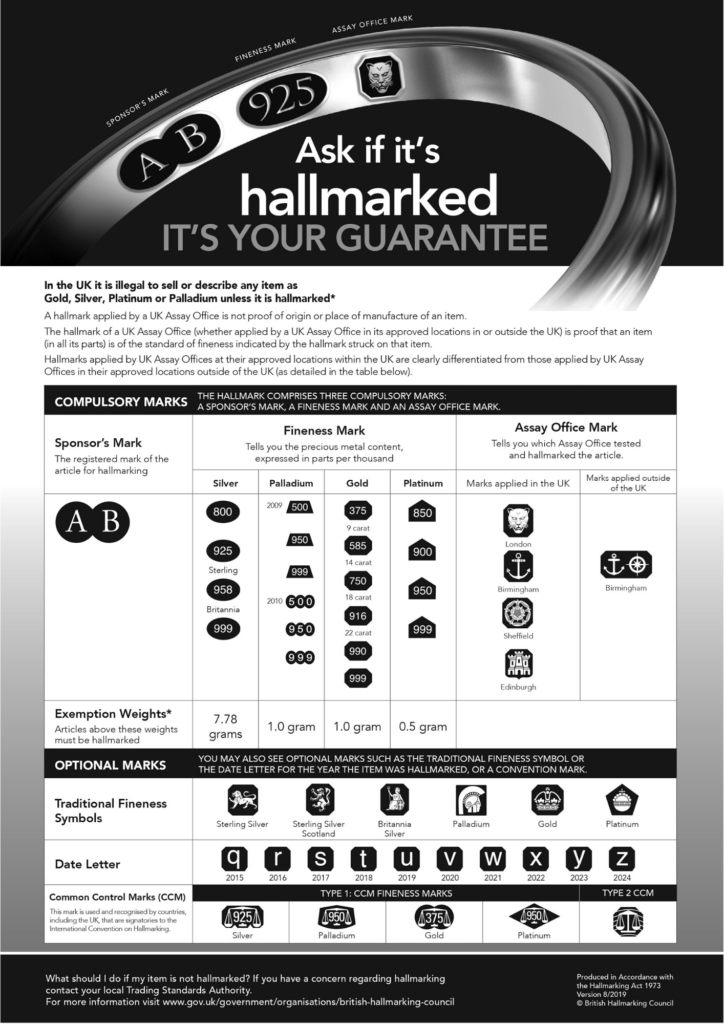Hallmarked Precious Metal Jewellery
I’m able to hallmark my precious metal jewellery and am proud to be registered with the goldsmiths company assay office in London. The Goldsmiths’ Company Assay Office is where hallmarking began in 1300, and they have been testing and hallmarking precious metals for over 700 years.
For any jeweller based in the UK selling precious metals, it is a legal requirement that designs weighing over a certain amount are hallmarked. All sterling silver pieces weighing over 7.78g, as well as all gold items over 1g should be hallmarked. Hallmarked precious metal jewellery gives you peace of mind that it is of the highest quality.
A hallmark consists of a series of small marks that are stamped onto an item. You can see below what a hallmark looks like. It’s not only used on jewellery, but on any article made from the precious metals palladium, platinum, gold and silver. A hallmark can only be applied by regulated assay offices, which are independent of the trade. It is this independence that ensures the integrity of hallmarking
Anything below the above weights does not need to be hallmarked and is free to be sold and described in the appropriate manner. I would love to hallmark every piece I sell, including my smaller, underweight pieces but there is a cost associated in doing so, so to keep some smaller jewellery designs more affordable, not every piece will be marked. All of my larger silver and gold items will always be hallmarked as standard though.
My very special makers mark, shown below, will be stamped on to every hallmarked piece, along with date, assay office and purity marks. If you’d like to find out a bit more about hallmarking you can visit the London assay office’s website here
why not take a little look at how we make our jewellery too?



